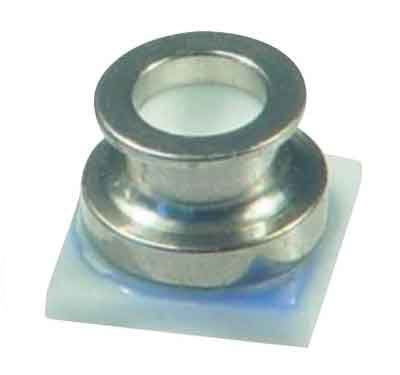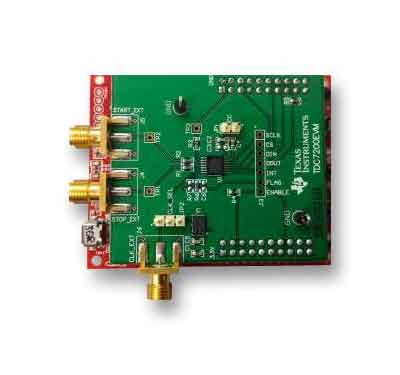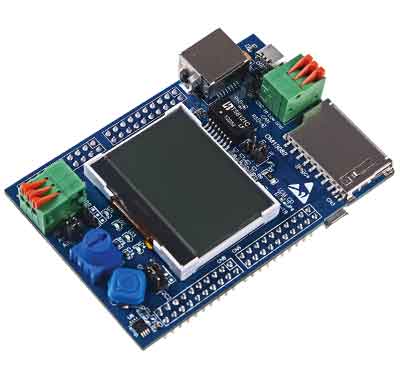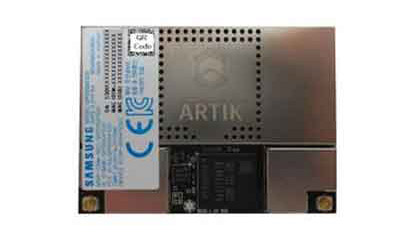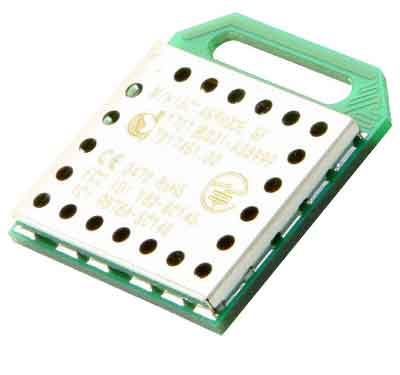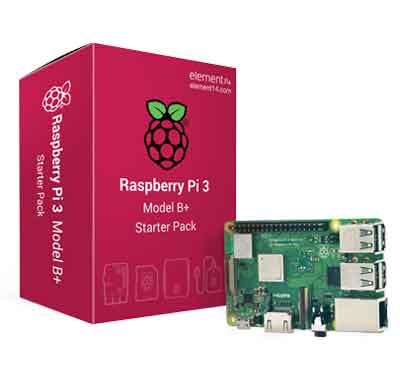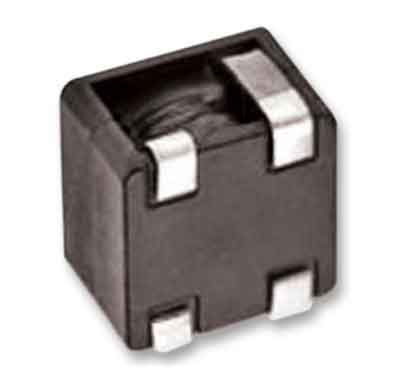What’s going on in the Internet of Things?
The Internet of Things (IoT) is still a relatively recent phenomenon; as such, there are still plenty of opportunities and innovative products to explore them with. Here, we look at four key areas of the ecosphere – sensors, power management, security and connectivity – and report on some of the latest and most exciting developments in each.
We conclude with a brief look at the relationship between the IoT and Artificial Intelligence (AI), and offer a view on how AI, by using Cloud technology, can help facilitate future and more ambitious IoT projects.
Sensors
1. Adding touch interaction to any object, surface or space
State-of-the-art silicon chips from STMicroelectronics have enabled new zForce AIR™ touch-sensing modules from Neonode, the optical sensor technology company.
Neonode’s compact, low-power, and easy-to-use modules add touch interaction to any USB- or I2C-connected object and work with any type of display or surface, including steel, wood, plastic, glass, skin, or even nothing, able to detect touch interactions in mid-air. The innovative approach uses laser-generated infrared light to track touch or gesture control, combining millimetre precision with ultra-fast response. The non-visible-spectrum light doesn’t impact display quality, add glare, or shift colours.
Information on the Neonode modules:
http://www.st.com/content/st_com/en/about/media-center/press-item.html/t3995.htmlMore information on the STM32 ARM Cortex microcontrollers used in the Neonode design
2. Honeywell’s new smart wireless thermostat offers sophisticated control from a smartphone or tablet
Honeywell’s Hot Water (T6R-HW) is a wireless thermostat with full internet control via smartphone or tablet, OpenTherm, time proportional and integral control (TPI), optimum start/stop and delayed start boiler control, plus additional, hot water-specific time control. For example, geo-fencing can detect when the householder is close to home, then turn the heating on and apply a hot water boost, ensuring the tank is filled and ready for them to have a hot shower.
Click for more information on the smart thermostat
View our wide range of thermostats
3. AdaSky and STMicroelectronics Cooperate to Bring Day/Night High-Resolution Vision and Perception to Cars
AdaSky’s Far Infrared (FIR) thermal camera embeds custom silicon co-designed with and manufactured by ST in its proprietary 28nm FD-SOI manufacturing technology. The complete sensing solution from AdaSky, called Viper, aims to enable autonomous vehicles to see and understand the roads and their surroundings in any condition. It provides accurate sight and perception without fail in dynamic lighting conditions, in direct sunlight, in the face of oncoming headlights, and in harsh weather.
More information on the FIR camera
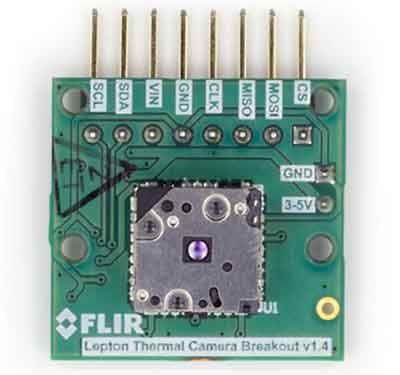
Fig.2: LWIR camera module
4. ContiConnect - a new digital tyre monitoring platform from Continental
ContiConnect monitors, analyses and reports data about tyre temperature and pressure for commercial fleets, such as trucks, busses, industrial or earth moving vehicles. It will increase up-time and reduce maintenance costs as well as maximise efficiency.
More information on the tyre pressure sensor
Information on an ultra-small gel-filled pressure sensor with temperature measurement capability
5. Sensor market size
According to a BBC Research report, the global sensor market has a projected double-digit growth – from about $123 billion in 2016 to $240 billion in 2021. Fingerprint sensors will lead, with 15.9% annual growth, while chemical, process variable, proximity and positioning sensors also among the fastest-growing. The automotive industry will remain as the leading consumer market for sensors.
https://electronicsforu.com/technology-trends/tech-focus/latest-sensors-applications
Power management
1. New FET drivers benefits 50-MHz DC/DC converter designs
The LMG1210 is a 50-MHz half-bridge driver designed for GaN FETs up to 200 V. The device's adjustable dead time control feature is designed to improve efficiency by as much as 5 percent in high-speed DC/DC converters, motor drives, Class-D audio amplifiers and other power-conversion applications. Designers can also create more efficient, higher-performing designs in speed-critical applications such as light detection and ranging (LIDAR) and 5G radio-frequency (RF) envelope tracking. High system-noise immunity is facilitated with the industry's highest common-mode transient immunity (CMTI) of more than 300 V/ns.
The device’s ultra-fast propagation delay of 10 ns enables power solutions that are 50 times faster than with silicon drivers.
More information on the LMG1210
Information on a LIDAR evaluation module
2. Building a power-efficient IoT product – white paper
When designing an IoT product, it is important throughout the design process to consider how a device’s behaviour will affect its energy budget. Energy consumption, battery capacity, and power generation are key components of the energy budget. This paper includes recommendations for optimizing power usage, storage, and generation.
https://www.particle.io/resources/power-management-for-iot-devices
3. Power management for IoT – System on a chip (SOC) development
While the above white paper discusses power management at an IoT device level, this document dives into design considerations at chip level – how to design power management circuits into a SoC solution.
https://www.design-reuse.com/articles/42705/power-management-for-iot-soc-development.html
4. Integrated DC/DC power IC modules allow size reduction for highly space-constrained designs
Designers working on space-constrained applications can now dramatically reduce solution size and increase efficiency with the family of micro system-level IC ("uSLIC") MAXM17532 and MAXM15462 modules from Maxim Integrated Products.
With dramatic advances in sensing, connectivity, and cloud computing, miniaturization is the next frontier that enables emerging trends such as artificial intelligence and machine learning. Next-generation system designs from Industrial Internet of Things (IIoT) sensors, defence electronics, and network infrastructure equipment to medical and consumer devices need to collect, synthesize, and act upon data. This new intelligence requires more power in ever-reducing space without impacting thermal budget, making conventional solutions unviable and complicated.
The uSLIC DC-DC buck regulator modules support multiple applications across nominal input voltages of 5V, 12V, 24V, and 36V with reliable headroom for today’s demanding applications.
More information on uSLIC applications
More information on the MAXM 17532 uSLIC device
Security
1. IoT Security Foundation (IoTSF)
Did you know that there’s a place where designers can find help for building security into their systems design?
IoTSF is a collaborative, non-profit, international response to the complex challenges posed by security in the expansive hyper-connected world. As such, IoTSF is the natural destination for IoT security professionals, IoT hardware and software product vendors, network providers, system specifiers, integrators, distributors, retailers, insurers, local authorities, government agencies and others who seek security. Their aim is to raise the quality bar, and drive the pervasiveness of security in IoT.
https://iotsecurityfoundation.org
2. Prevent edge node attacks by securing your firmware
A white paper published by NXP and ARM describes how to achieve a secure boot with lightweight implementation using NXP® ARM Cortex®-M based microcontrollers with mbed TLS cryptography support.
More information on the white paper:
NXP supports their ARM-based microcontrollers with LCPXpresso™, a low-cost development platform. This is facilitated by their LPC General Purpose Shield for LCPXpresso™, which provides easy access to several commonly used peripherals. For more details, visit: www.farnell.com/datasheets/1955486.pdf?_ga=2.195111396.938801719.1525253592-419697015.1487005164
3. Recent additions to Samsung Electronics’ Artik platform for IoT security
ARTIK™ secure “s” systems-on-modules and services are recent additions to the ARTIK™ IoT Platform that strengthen edge security. Samsung’s ARTIK™ IoT platform now delivers device-to-cloud security for companies to build, develop and manage secure, interoperable, and intelligent IoT products and services for everything from smart homes to high-tech factories.
More information on ARTIK™ secure “s” systems-on-modules:
Technical data on ARTIK modules
4. NXP A700x tamper resistant secure MCUs are available for security applications
NXP A700x tamper resistant secure MCUs use a dedicated security hardened MX51CPU. The family features a significantly enhanced secure microcontroller architecture. NXP ICs have been used in security applications such as bank cards, health insurance cards, electronic passports, pay-TV cards and mobile phones.
www.farnell.com/datasheets/2577445.pdf?_ga=2.187523050.39963745.1523380137-419697015.1487005164
Connectivity
1. Ultra-reliable and congestion free wireless connectivity solution for smart buildings and industrial applications
DSP’s new DHAN-J ultra-low energy module offers applications developers a turn-key wireless connectivity platform for ultra-low energy nodes, both battery and AC-powered. The module has FCC, IC and ETSI regulatory certification, removing the RF certification load from developers and significantly reducing product development time.
For more information: https://www.econotimes.com/DSP-Group-Launches-Production-Ready-Module-for-Industrial-IoT-Applications-1248788
2.New Raspberry PI module features significant improvements in performance, wireless connectivity and wireless circuitry certification
The new Raspberry Pi 3 Model B+ features a 1.4GHz 64-bit quad-core ARM Cortex-A53 CPU, dual-band 802.11ac wireless LAN and Bluetooth 4.2, faster Ethernet (Gigabit Ethernet over USB 2.0), power-over-Ethernet support (with separate PoE HAT) and improved thermal management. The new module is claimed to have roughly three times the wired and wireless network throughput, and the ability to sustain high performance for much longer periods.
For more information on this module: https://www.eetimes.com/document.asp?doc_id=1333087
The Farnell website has a wealth of information and products related to starter packs, mainboards and expansion boards, enclosures, cables, connectors and other Raspberry Pi accessories For a gateway to all of these, visit.
3. Excel sheet to estimate range for Sub-GHz indoor and outdoor radio links
Texas Instruments has published a useful spreadsheet that allows developers to estimate realistic transmission range expectations for Sub-GHz antennas
Range Estimation for Indoor and Outdoor Rev1_17.xlsm
4.New 200-watt development system allows wireless transmission of both power and data
Würth Elektronik eiSos and Infineon Technologies are offering a 200-watt development system for wireless power transfer. What makes the development kit special is that the link between the transmitter and receiver coils can be used to transfer not only power but also data.
The 760308EMP-WPT-200W development kit comprises a power supply, a transmitter unit and a receiver unit, and is an innovative and powerful solution thanks to the products from Würth Elektronik and Infineon (MOSFETS, drivers, microcontrollers, voltage regulators).
For more information on this new development system, visit: https://www.infineon.com/cms/en/about-infineon/press/market-news/2018/INFPMM201803-042.html
The IoT, cloud computing and artificial intelligence
The IoT and Artificial Intelligence (AI) are two technological trends that may be seen as independent - yet in some ways, they complement one another very well. The IoT is generating huge numbers of geographically distributed sensors that are creating very high volumes of data. Often, this data must be quickly analysed, collected, and transferred onwards for further processing. Yet all of this processing must be completed quickly enough to avoid unacceptable response delays.
Artificial Intelligence, if it can be effectively deployed, provides one possible solution to this dilemma. It can act on large amounts of data, using programmatic reasoning, self-correction and ultimately learning, to generate actionable information and results.
However, merging IoT and AI is not possible without an enabling platform and architecture. One emerging strategy uses the concept of the hybrid cloud platform. Such platforms encompass various forms of storage that are tailored for AI and IoT infrastructures, rapid processing of information and rapid enrichment of data through correlation of various sources, and security that’s customised for the application.
IoT implementations to fulfil increasingly ambitious applications in the future can be enabled by this triumvirate of IoT, AI and the hybrid cloud. The detail from which these concepts were drawn can be seen in an InfoWorld article of October 12, 2017, titled ‘ AI, IoT, and the hybrid cloud: the triumvirate of IT’s future’
What’s going on in the Internet of Things? Date published: 5th June 2018 by Farnell element14

